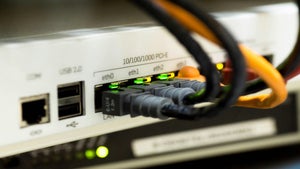News
Huawei has a head start in the US-China tariff war: Can other brands learn from it?
Huawei’s early push for tech independence has made it resilient in the US-China trade war. Other brands may need to follow its lead to withstand growing tensions.

- April 17, 2025
- Updated: April 17, 2025 at 7:50 AM

As the trade tensions between the United States and China intensify, one company stands unusually resilient: Huawei has spent years preparing for this scenario, and now finds itself in a strong position. While Western firms scramble to adjust, Huawei’s long journey toward technological self-sufficiency is beginning to pay off.
A strategy born out of necessity
Huawei’s transformation began in 2019 when the U.S. banned its collaboration with American companies. This forced the Chinese tech giant to rethink its entire supply chain, develop its own operating system—HarmonyOS—and seek local partners for chip manufacturing. With SMIC stepping in after TSMC’s exit, Huawei began producing its own Kirin chips, a move that reduced its dependency on U.S. technology years ahead of the current crisis.
Winning the tariff war by default
With most ties to U.S. tech already severed, the impact of the recent tariffs on Huawei has been minimal. Unlike rivals that still rely on American hardware, software, or fabrication plants, Huawei operates primarily within China’s borders, serving a massive domestic market with little disruption. Its isolation, once seen as a disadvantage, now acts as a competitive shield.
What other brands can take away
Huawei’s response offers a blueprint for others: diversify suppliers, develop internal capabilities, and prepare for geopolitical shifts before they hit. Companies like Xiaomi, Oppo, and Realme could benefit by adopting parts of Huawei’s open-source HarmonyOS, especially if future restrictions target Google’s services. The key lesson? Resilience is not reactive—it’s strategic.
Latest from Agencias
- Model C and Model D: Foxconn’s Electric Vehicles Debuting by Late 2025
- BYD Sets New Standards in Electric Vehicle Performance and Efficiency
- Electric Supercar Achieves 1,000 Horsepower and Double Downforce in Historic Test
- What you can do with the Gemini extension for Google Photos and why you should try it now
You may also like

Model C and Model D: Foxconn’s Electric Vehicles Debuting by Late 2025
Read more

BYD Sets New Standards in Electric Vehicle Performance and Efficiency
Read more

After the Hertz attack, what can we do to protect our data?
Read more

Electric Supercar Achieves 1,000 Horsepower and Double Downforce in Historic Test
Read more

What you can do with the Gemini extension for Google Photos and why you should try it now
Read more

How to reliably check your internet speed
Read more